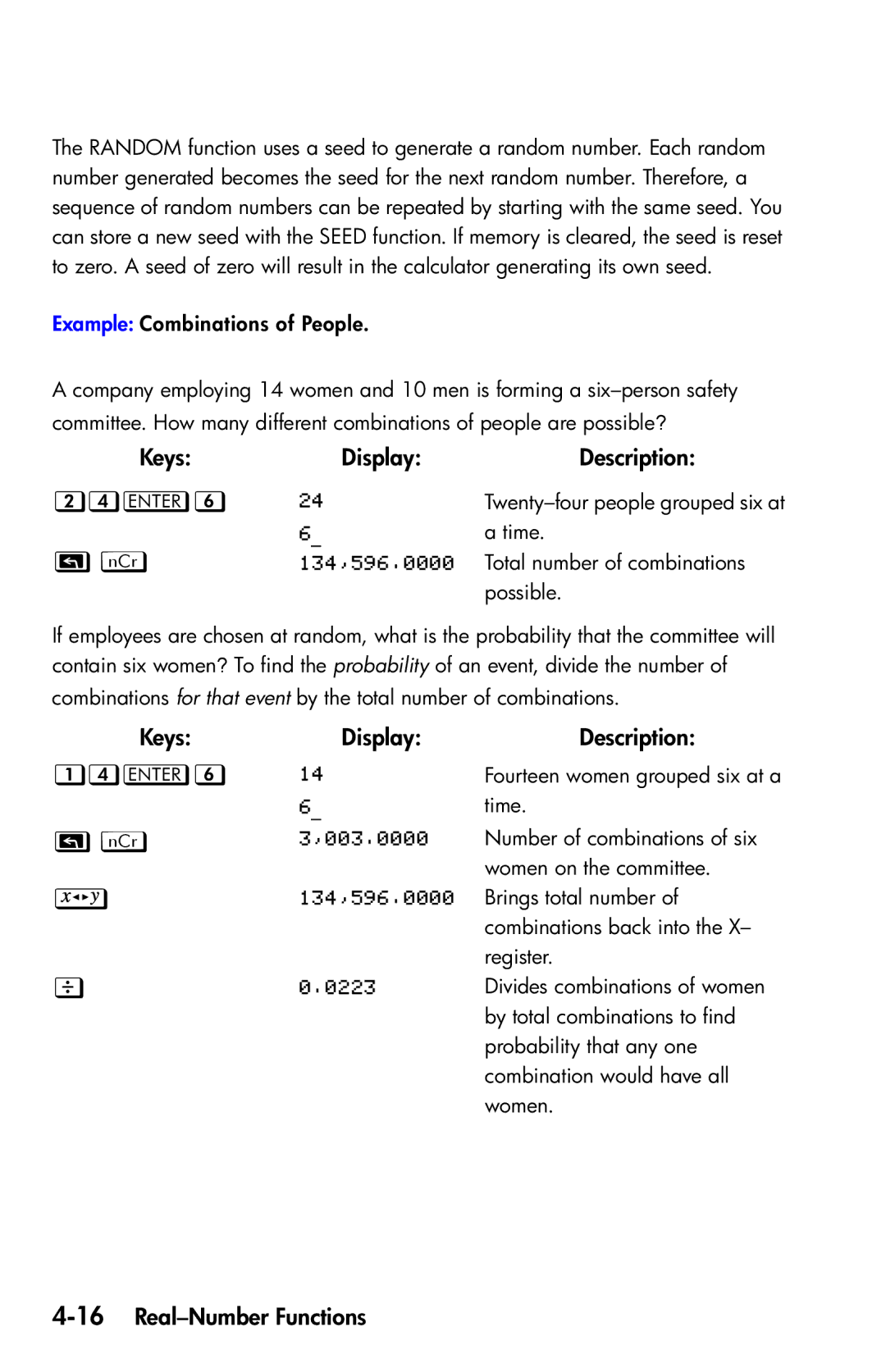The RANDOM function uses a seed to generate a random number. Each random number generated becomes the seed for the next random number. Therefore, a sequence of random numbers can be repeated by starting with the same seed. You can store a new seed with the SEED function. If memory is cleared, the seed is reset to zero. A seed of zero will result in the calculator generating its own seed.
Example: Combinations of People.
A company employing 14 women and 10 men is forming a
Keys:Display:
| |
| _ |
x | |
Description:
Total number of combinations possible.
If employees are chosen at random, what is the probability that the committee will contain six women? To find the probability of an event, divide the number of combinations for that event by the total number of combinations.
Keys:Display:
| |
| _ |
x | |
Description:
Fourteen women grouped six at a time.
Number of combinations of six women on the committee. Brings total number of combinations back into the X– register.
Divides combinations of women by total combinations to find probability that any one combination would have all women.
